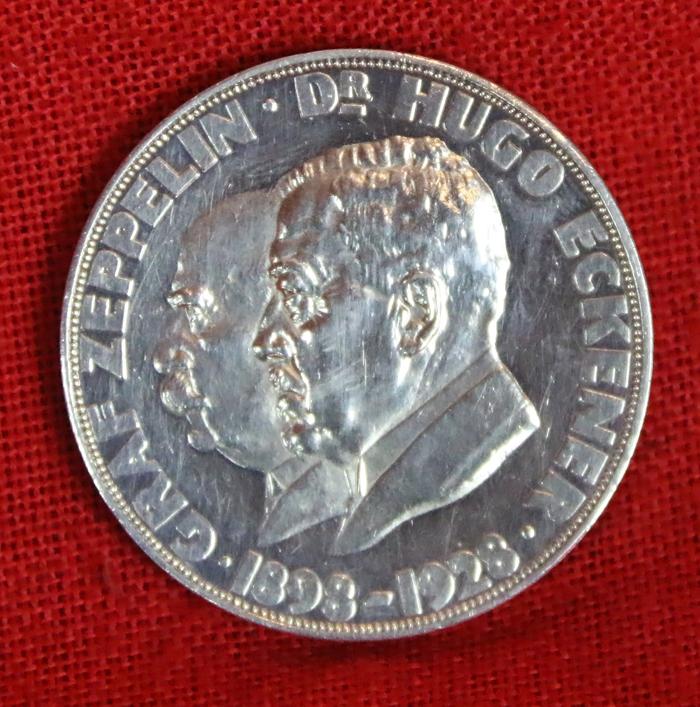German Solid Silver Medal {900 fine} Commemorating The William Randolph Hearst Sponsored, American Flight, of the World’s First Round the World Passenger Flight, of the "Graf Zeppelin" Airship In August 1929.
Medal commemorating round the world flight of the "Graf Zeppelin" airship, with portraits of Zeppelin and Eckener, silver, diameter 36mm, depth 3mm, German, 1929. Rim legend: Preuss. Staatsmunze. Silber 900 Fein. Obverse: legend, Weltfahrt August 1929. L.Z.127; exergue scene, airship above ocean. Reverse: Graf Zeppelin. Dr Hugo Eckener. 1898-1928. exergue, double portrait bust profiles to left
The airship LZ 127 Graf Zeppelin is considered the most successful commercial airship of its time and marked the pinnacle of airship travel. On August 15, 1929, it started under the leadership of Dr. Hugo Eckener in Friedrichshafen on Lake Constance on the most spectacular demonstration flight in aviation history at the time:
Graf Zeppelin Round-the-World Flight (“Weltfahrt”)
In 1929, Graf Zeppelin made perhaps its most famous flight; a round-the-world voyage covering 21,2500 miles in five legs from Lakehurst to Friedrichshafen, Friedrichshafen to Tokyo, Tokyo to Los Angeles, Los Angeles to Lakehurst, and then Lakehurt to Friedrichshafen again.
It was the first passenger-carrying flight around the world and received massive coverage in the world’s press.
The flight was partly sponsored by American newspaper publisher William Randolph Hearst, who paid for about half the cost of the flight in return for exclusive media rights in the United States and Britain.
Hearst had insisted that the flight begin and end in America, while the Germans naturally thought the Round-the-World flight of a German ship should begin and end in Germany. As a compromise, there were two official flights; the “American” flight began and ended at Lakehurst, while the “German” flight began and ended at Friedrichshafen.
The Round-the-World flight carried 60 men and one woman, Hearst newspaper reporter Lady Grace Hay-Drummond-Hay, whose presence and reporting greatly increased the public’s interest in the journey. Other passengers included journalists from several countries, American naval officers Charles Rosendahl and Jack C. Richardson, polar explorer and pilot Sir Hubert Wilkins, young American millionaire Bill Leeds, and representatives of Japan and the Soviet Union. All of those that took part received one of these solid silver medals.
Graf Zeppelin left Friedrichshafen on July 27, 1929 and crossed the Atlantic to Lakehurst, New Jersey, and the “American” flight began on August 7, 1929 with an eastbound crossing back to Germany.
The successful journey took just under 5 weeks with stopovers in Tokyo, Los Angeles and Lakehurst (New York).
Code: 24154
240.00 GBP





